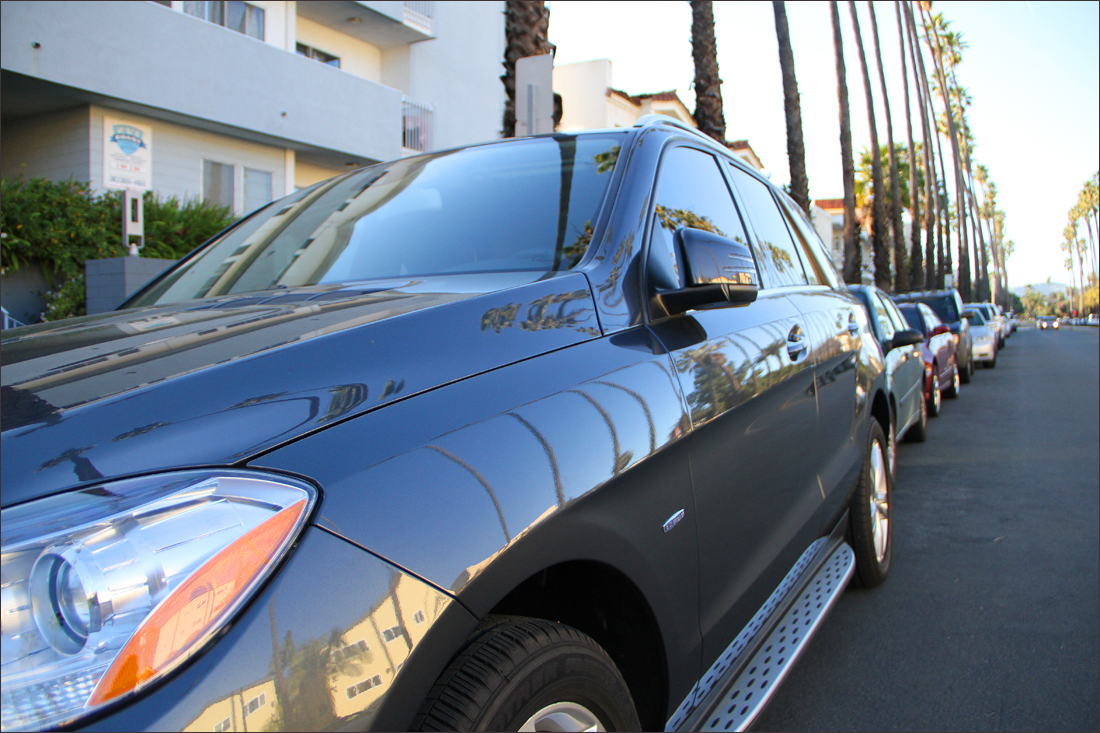
CITYWIDE — A transportation planning consultant offered up a first draft of proposed parking requirements to the Planning Commission Wednesday night that would radically reduce the amount of parking required for new developments in most of Santa Monica.
The recommendations represent a drastic shift from how parking is currently provided in the city, including ceilings on the amount of parking allowed in new development and encouragement of shared or leased parking.
Aggressive strategies like those listed in the report are the only way for Santa Monica to meet the traffic and pollution reduction goals outlined in the Land Use and Circulation Element adopted in 2010 with broad community support, said Jeffrey Tumlin, a consultant with transportation planning firm NelsonNygaard.
It can also attack one cause of expensive rents by removing the cost of parking from the equation.
Residents see it another way. Parking is expensive to build, therefore developers don't want to pay for it.
Tumlin's theory, shared by many in the world of parking planning, revolves around a central maxim: Cheap, plentiful parking attracts cars, which create traffic and an unhealthy environment.
Restrict parking or charge enough for it and those problems resolve themselves naturally, he suggested.
"Creating more empty parking requirements creates no good for the city," Tumlin said.
That didn't please residents, who believe in progressive social and environmental goals but also want assurances that they will have a parking spot near their home or at the supermarket when they buy a week's worth of groceries.
"We're residents; we're not a social experiment," said John Petz, one of the last to speak at the meeting. "We didn't move here to become part of a theoretical new world."
Under the proposal, parking would be unbundled from the cost of an apartment, and visitor parking would no longer be required.
It also has implications for retail locations.
Markets larger than 5,000 square feet would be able to reduce their available parking by 75 percent in some cases, shocking residents who already find parking at local Whole Foods or Trader Joe's a harrowing experience.
The report goes on to detail suggestions for other kinds of retail and living spaces, including fast food and other uses. The requirements differ based on location in the city and proximity to transit or mixed-use developments.
Parking counts conducted on five streets — Main Street, Montana Avenue and Ocean Park, Santa Monica and Wilshire boulevards — suggested that parking supply is not the problem, Tumlin said.
At the busiest hours in August, parking on those streets was between 58 and 89 percent full, according to the survey conducted by Gibson Transportation Consultants, Inc.
Off-street parking had even more availability, varying between 53 and 71 percent full depending on the street.
That didn't jibe with many of the residents' experiences of parking on Montana Avenue.
The parking study had several fatal flaws, said Amy Aukstikalnis, an economist and concerned resident.
Gibson Transportation Consultants Inc. conducted their counts in August, which bothered Montana Avenue visitors who felt that it captured an inaccurate view of parking needs in the area.
The consultant also counted private parking lots with no availability to the public as part of the supply, and did their work on a Friday when streets were uncharacteristically empty for street cleaning.
"The survey needs to be done correctly," Aukstikalnis said. She estimated that the street cleaning alone factored in over 350 additional free spaces than the consultant might otherwise have found.
When questioned by commissioners, Gibson stood firm to his numbers.
Commissioners and city officials were quick to say that Wednesday night was the first of many discussions about the future of parking in Santa Monica, something that will eventually be codified in the update to the city's zoning ordinance.
There needs to be more of an education effort, said Commissioner Richard McKinnon.
"We can't just jam it down people's throats," McKinnon said. "There is an education process that needs to go on, and it has to happen very rapidly."
That might include one salient point — the changes envisioned in the document would not occur overnight, only when an entire site is redeveloped.
"If nothing is built, all we're talking about is zero," Tumlin said.
Wednesday night spelled out a reality of living in a progressive city. It can be uncomfortable to be on the front lines of a cultural shift.
These kinds of discussions are happening all over the country and internationally, said Juan Matute, with the UCLA Institute of Transportation Studies and a Santa Monica resident, and it's hard for those living in the community who may have increased competition for resources they now enjoy.
"Now that communities have become more concerned about greenhouse gases, traffic, quality of life and multimodal streets, more progressive cities are taking a look and saying there's no way we can have it all," Matute said.
"We can't have easy parking for everyone and achieve some of our other goals," he said.
ashley@www.smdp.com









